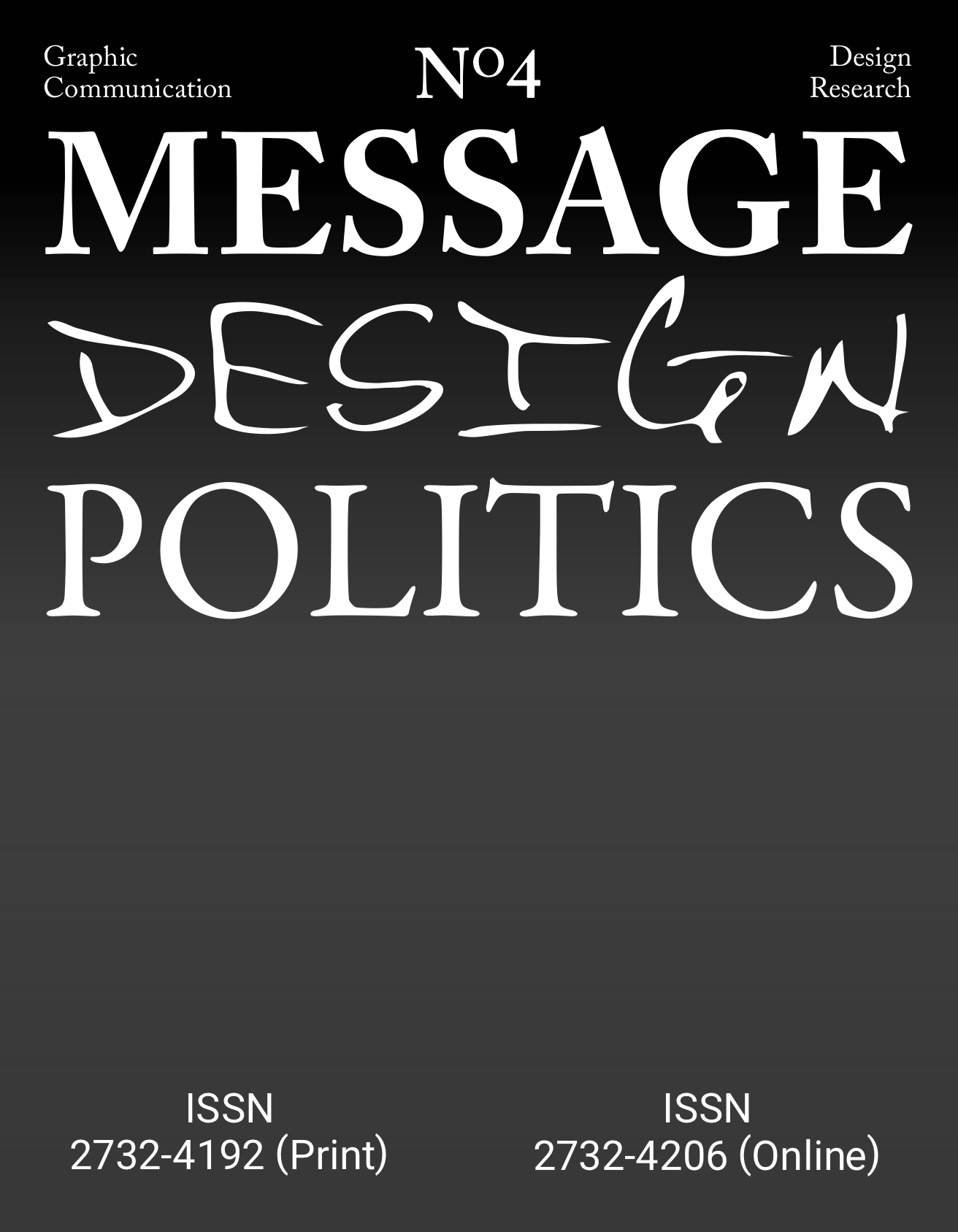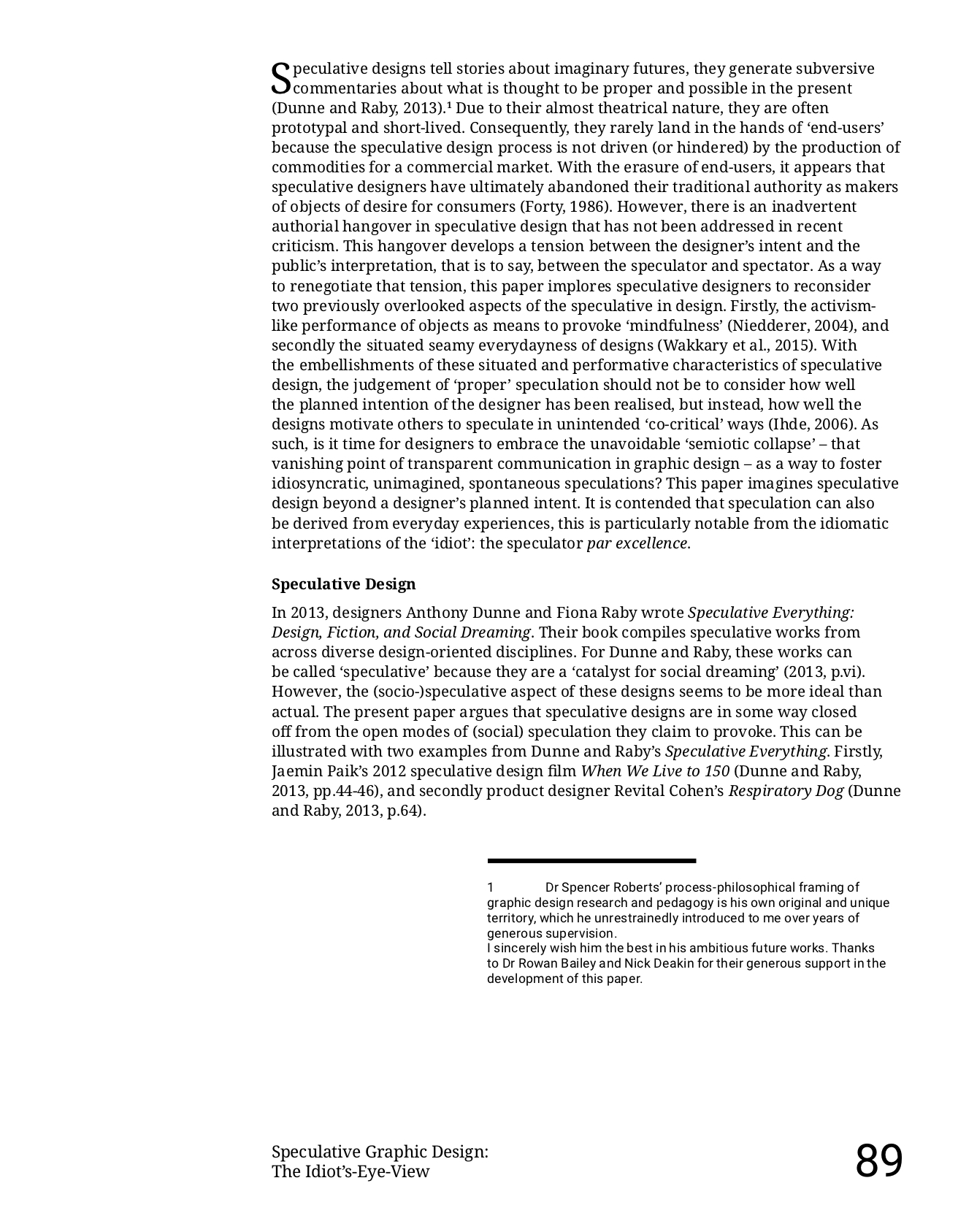Speculative Graphic Design: The Idiot's-Eye-View
Speculative designs tell stories about imaginary futures, they generate subversive commentaries about what is thought to be proper and possible in the present (Dunne & Raby, 2013). Due to their almost theatrical nature, they are often prototypal and short lived. Consequently, they rarely land in the hands of ‘end-users’ because the speculative design process is not driven (or hindered) by the production of commodities for a commercial market. With the erasure of end-users, it appears that speculative designers have ultimately abandoned their traditional authority as makers of objects of desire for consumers (Forty, 1986). However, there is an inadvertent authorial hangover in speculative design that has not been addressed in recent criticism. This hangover develops a tension between the designer’s intent and the public’s interpretation, that is to say, between the speculator and spectator. As a way to renegotiate that tension, this paper implores speculative designers to reconsider two previously overlooked aspects of the speculative in design.
Firstly, the activism-like performance of objects as means to provoke ‘mindfulness’ (Niedderer, 2004), and secondly the situated seamy everydayness of designs (Wakkary et al., 2015). With the embellishments of these situated and performative characteristics of speculative design, the judgement of ‘proper’ speculation should not be to consider how well the planned intention of the designer has been realised, but instead, how well the designs motivate others to speculate in unintended ‘co-critical’ ways (Ihde, 2006). As such, is it time for designers to embrace the unavoidable ‘semiotic collapse’ — that vanishing point of transparent communication in graphic design — as a way to foster idiosyncratic, unimagined, spontaneous speculations? This paper imagines speculative design beyond a designer’s planned intent. It is contended that speculation can also be derived from everyday experiences, this is particularly notable from the idiomatic interpretations of the ‘idiot’: the speculator par excellence.




